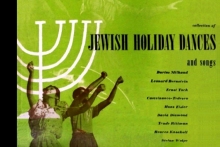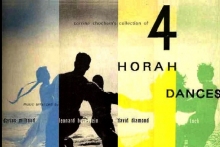This piece, in a different version, appeared on Jewish Holiday Dances and Songs (1948, Vox), a 78-rpm recording produced by Corrine Chochem.
Works
-
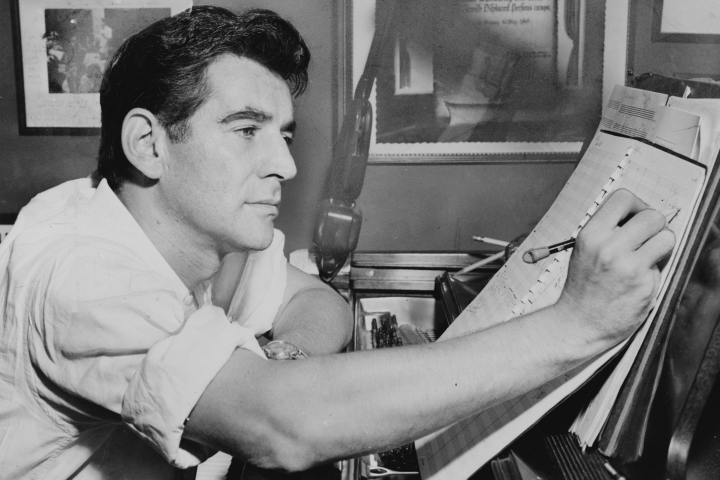 "Few composers capture their time and become the iconic voice of their age. Leonard Bernstein found his "voice" in the early 1940s and projected the sound of urban and urbane America from the period of World War II to the anti-war movements of the 1970s and the restoration of freedom in Europe, with the fall of the Berlin Wall and Soviet communism."
"Few composers capture their time and become the iconic voice of their age. Leonard Bernstein found his "voice" in the early 1940s and projected the sound of urban and urbane America from the period of World War II to the anti-war movements of the 1970s and the restoration of freedom in Europe, with the fall of the Berlin Wall and Soviet communism."
-Conductor John Mauceri
(Photo by Al Ravenna, 1955; via Wikimedia Commons)
Questions about programming, performing, and licensing?
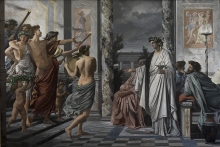
Scored for solo violin, harp, string orchestra, and percussion, Serenade remains one of Bernstein’s most lyrical orchestral works.
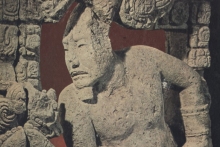
A fanfare for double brass ensemble and percussion, commissioned by and dedicated to the Metropolitan Museum of Art in New York in honor of its Centenary in 1969.

Bernstein wrote this piece in honor of the forty-first birthday of his friend mezzo-soprano Jennie Tourel. The song incorporates an old Lebanese folksong, the Arabic words of which are paraphrased in the lyrics: “The boys in the dark olive groves assemble.” Bernstein can be heard singing this …
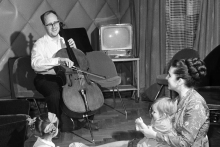
Leonard Bernstein’s SLAVA! A Political Overture was premiered on October 11, 1977 as a part of Mstislav Rostropovich's inaugural concerts as music director of the National Symphony Orchestra. Dedicated to Rostropovich, the piece concludes with the musicians shouting "Slava!"
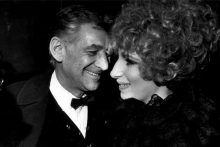
So Pretty is a 1968 anti-war song by Leonard Bernstein to lyrics by Betty Comden and Adolph Green, composed for a Broadway for Peace fundraiser at Lincoln Center's Philharmonic Hall to support the Congressional Peace Campaign Committee, which funded campaigns of congressional candidates opposing t…
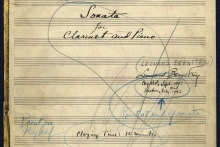
The Sonata for Clarinet and Piano was Bernstein’s first published composition. This work reflects the youthful enthusiasm of the time: walking basses, pervasive syncopations and melodic flourishes make this a fun and exciting work.
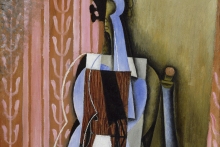
One of Bernstein's earliest works, composed while he was a student at the Curtis Institute, for violin and piano.

In Songfest, Berstein encapsulated 300 years of his nation's history through the words of 13 American poets. The subject matter of their poetry is the American artist's experience as it relates to his or her creativity, loves, marriages, or minority problems (blacks, women, homosexuals, expatria…
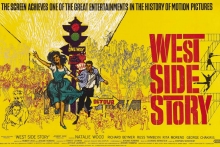
Why are these dances called symphonic? Simply because the dance music, even in its original format, is symphonically conceived. Relatively few thematic ideas, combined with each other and metamorphosed into completely new shapes, are all that are necessary to meet the varying dramatic requirements…
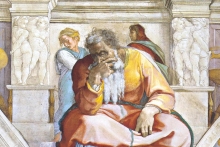
With his first symphony, Bernstein not only established himself as a major American symphonist, he began a musical and dramatic exploration of a theme that would continue to inspire many of his major works throughout his career. "The work I have been writing all my life," he said in 1977, "is abou…
Bernstein's Symphony No. 2: The Age of Anxiety for piano and orchestra was commissioned by his long-time mentor Serge Koussevitzky in 1949. Based on an eponymous poem by W.H. Auden, the movements follow the narrative in which four lonely strangers who meet in a wartime New York bar and spend the e…
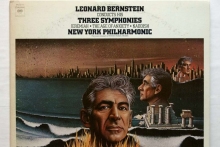
In his Kaddish Symphony, Leonard Bernstein exploits the dualistic overtones of the prayer: its popular connotation as a kind of requiem, and its celebration of life ( i.e. creation). He does this both in his speaker's text and in his music.
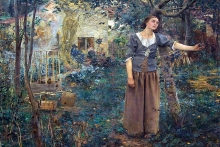
Jean Anouilh's 1952 play, The Lark, is based on the trial and execution of Joan of Arc. An English adaptation was made by Lillian Hellman, and Bernstein composed incidental music for the accompaniment. The music now exists in an arrangement for mixed choir or a septet of solo voices.
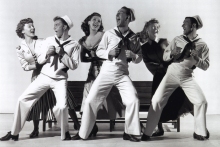
Writes Bernstein, “It seems only natural that dance should play a leading role in the show On the Town, since the idea of writing it arose from the success of the ballet Fancy Free. ... The story of On the Town is concerned with three sailors on 24-hour leave in New York, and their adventures wi…
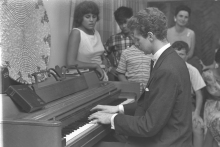
Composed for the Sixth Van Cliburn International Piano Competition at Fort Worth, Texas, Bernstein's piece for solo piano cycles through a chorale, eight variations, and a coda.
Leonard Bernstein was on his honeymoon in 1951 when he began composing his one-act opera, Trouble in Tahiti, a candid portrait of the troubled marriage of a young suburban couple, that draws upon popular songs styles to deliver an uncompromising critique of post-war American materialism.
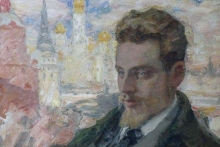
In 1949, Bernstein set a pair of texts by the poet Rainer Maria Rilke, the first of which, Extinguish My Eyes, was introduced that same year by mezzo-soprano Jennie Tourel at Town Hall in New York. It wasn’t until 1963 that she premiered the second song, When My Soul Touches Yours.
